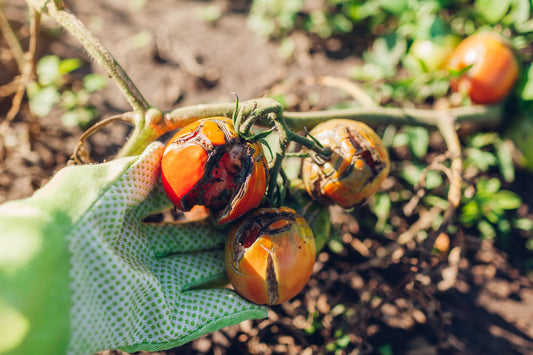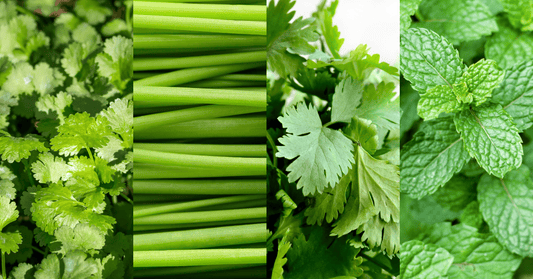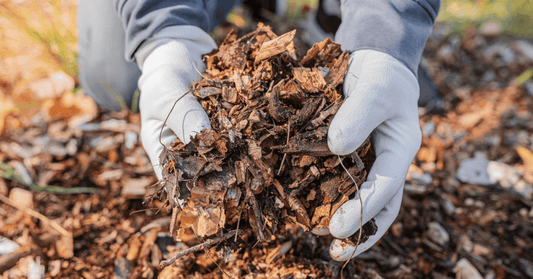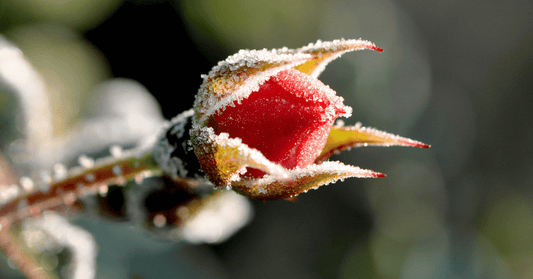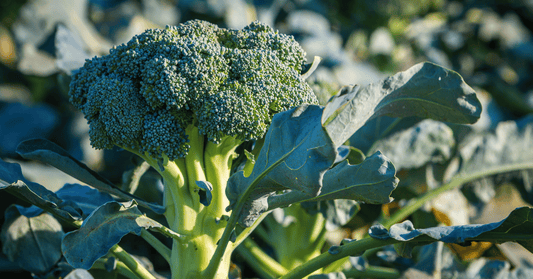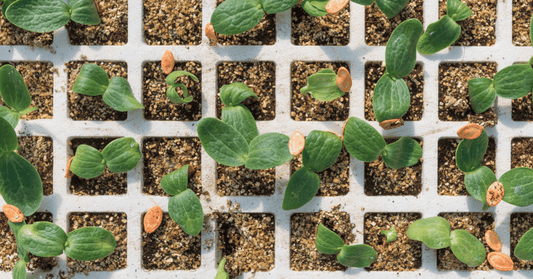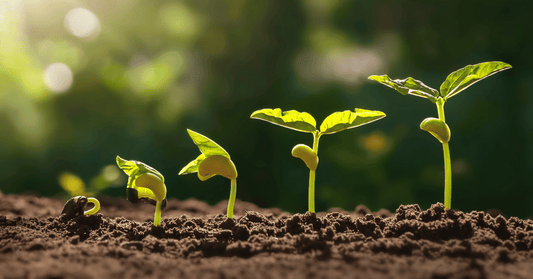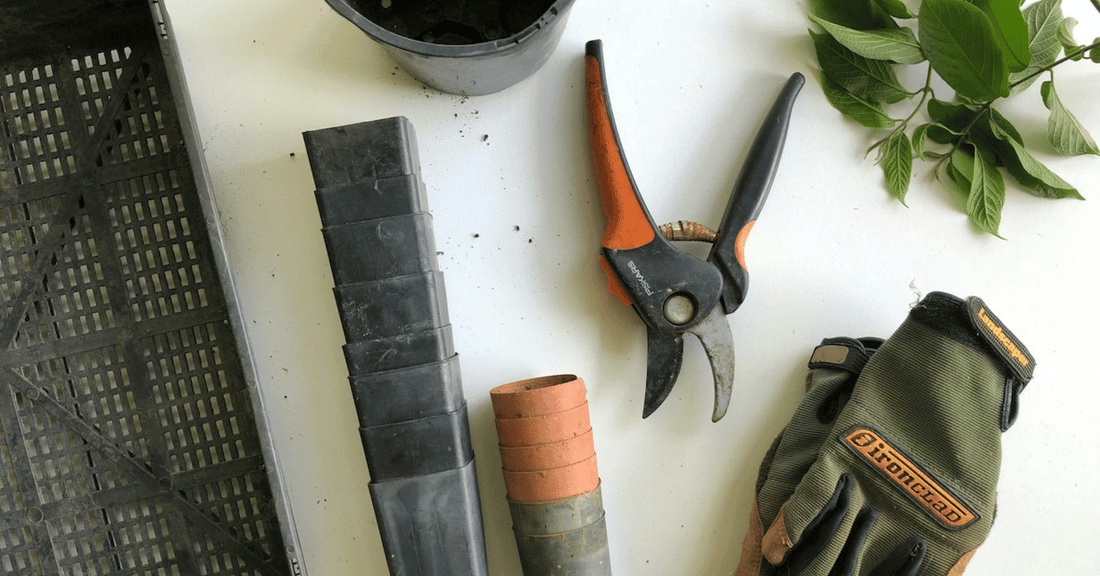
Ultimate Fall Gardening Guide: Prepare Soil, Plant Cold-Weather Vegetables, and More!
It's that time of the year to start prepping your garden for spring! Fall is the perfect time for garden maintenance, sprucing up the soils, and preparing for new growth before we head into the colder season. As you begin thinking about what you want to grow before the colder months ahead, there is a lot that needs to be done to prepare your garden and get the most out of your springtime harvest. If you aren’t sure where to start, here are a few fall gardening tips to consider:
How to prepare the soil for spring
Taking the time to prepare your soil for new growth in spring will allow for optimal growth and a refreshed garden. Before you start preparing your garden beds, now is a great time to clean and disinfect any of your gardening tools to ensure you aren’t spreading any disease to new plants you plan to grow in your soil.
After that, consider laying down compost over your current soil to enrich the soil before adding new plants in. Another thing to keep in mind is that soil often becomes impacted due to external factors such as rain and weather changes. Add EM-1 soil conditioner to any compacted soil to help naturally loosen compact soil and improve water foculation.
Once your soil is set and ready to go, you can top it off with some fresh compost and start to consider what types of plants you want to add to your garden this fall for your spring harvest.

What to plant now
Now that summer is over, it’s time to pick, eat, or share with your neighbors all of those delicious bright-colored vegetables you’ve been growing. Unfortunately, vegetables such as tomatoes or zucchini won’t be able to withstand the drastic weather change. As you enjoy the last bites of summer, you can start planting and preparing to grow other vegetables that can live through the winter weather.
Here are a few colder weather vegetables you can grow in fall that thrive in the colder weather and will be ready for spring harvest:
- Lettuce
- Carrots
- Spinach and Parsley
- Asparagus
- Onions
- Shallots
- Garlic
- Turnips
- Beets
- Peas

These are just a few vegetables that do better being planted during colder seasons and right before winter comes.
You can also prep the soil for ornamental plants to bloom in the spring. It is recommended to start planting any ornamental plants 8 weeks before the frost of winter. This is to ensure your newly planted seeds or bulbs are rooted in the ground before winter, so they can thrive during spring. There are many options for planting bulbs in the fall, from Daffodils to Tulips, you are sure to find a flower that adds a pop of color to your garden. When choosing a flower to plant and grow, make sure you are mindful of how much bright light or shade the flowers will need. This can help you decide where each flower will do well for the seasons to come.
Fall is also a great time to start planting any shrubs or trees you want to add to your landscaping. The cool air mixed with the warmth of the soil helps with optimal root growth to help your shrubs and trees start to grow in the soil before winter comes. If you are looking to enhance your yard with a fresh new lawn, you can also consider laying down seeds for turfgrass during fall. If you just want to repair a few patches of lawn and not reseed the whole area, you can sprinkle grass seeds wherever you need to, just make sure you keep the areas well watered until winter arrives.
As you pick and choose what you wish to plant during the fall for spring harvest, you will need to consider your region. Hotter climates prefer to be planted during winter for spring harvest. However, if you reside in a cooler region, you will want to begin planting for spring harvest during the fall months. As you curate a list of what you want to plant this fall, you will also want to do some additional research on each plant and vegetable. This extra step will help ensure you are providing them with the best growing conditions for optimal growth.
Pro tip: For any ornamental plants you don’t think will live through the colder months, bring the clippings inside and turn them into indoor plants! This can be an easy way to keep the plants you love and continue to watch them grow.

Caring For Your Soil During The Cooler Months
When the leaves begin to fall and the weather starts getting cooler, you may feel like your list of chores gets a lot longer. Luckily, you can use fallen leaves as part of your fall composting which is a great way to care for your soil during the cooler months. Leaves are carbon-rich and are usually available in an abundant amount. Stay away from any evergreen leaves and make sure they are turning brown before adding them to your outdoor compost. You can also add in grass clippings and any old flowers or plants to create rich compost for your plants this fall. This is one of the best ways to rejuvenate your soil during the fall months and can be a quick and easy solution for prepping your garden for next year’s growth.
If you live in one of the colder states where snow covers that ground most of the winter, Bokashi Composting is the all season solution for creating nutrient rich fertilizer for your garden. Bokashi composting is done indoors using a special bokashi compost bucket. If snow prevents you from adding the compost into the soil, you can add the compost into a container of soil indoors to finish of the fermentation. This is a perfect way to create a supply of organic top soil ready for spring planting.
If your soil and garden require some more love during the colder months, combining the strengths of both of our EM-1® and EM® Bokashi can help your plants grow more vigorously and robustly. EM-1® soil condition helps to release nutrients in the soil that your plants could never access on their own, creating bigger yields and a greener garden. It also replaces the need for store bought chemical fertilizers with a bio-dynamic, non-GMO alternative that boosts plant health and production. Not only does EM-1® make a great addition to your soil during the fall but it also contains Effective Microorganisms® that help to replenish tired soil and increases the beneficial microbial population of the soil that your plants need to thrive. These microbes improve soil structure and water infiltration and drainage.
If you want to combine the best of both worlds to replenish your soil, consider our Dynamic Garden Duo. This duo can help you build fertile, organic soil that will help increase the growth of your flowers, lawn, vegetables, and trees.

Fall Clean-up
As leaves begin to fall and rain becomes the new norm, it may be a good time to prioritize cleaning your garden and prepping for new growth. Here are a few fall gardening tips to add to your fall clean up checklist that can help you prepare before the colder months arrive:
- Rake leaves and clean debris
- Care for and mow your lawn
- Oil your gardening tools
- Clean and store any planters you won’t be using
- Sanitize and disinfect all gardening tools
- Organize and clean your garden shed
These are just some garden cleaning you can start to do during fall. Since every garden is unique, there may be fewer or more tasks you may want to add to your checklist for fall gardening. Making a habit out of preparing and cleaning up your garden before winter arrives, will give you peace of mind and feel more in control of your garden.

Garden Maintenance
Seasonal garden maintenance can keep your garden looking good and keep your plants happy, all year long. As the temperature continues to cool down, you may want to consider providing your plants with extra protection to protect them from bugs or frost. You can do this by bringing potted plants indoors, laying down mulch, or covering sensitive crops with fabric or burlap. These small seasonal changes can help you maintain your garden throughout the colder seasons and prepare you for spring.
As the leaves continue to change, so can your garden. The fall can be a great time to plan for the spring harvesting you’ve always wanted. As you start to clean up your garden and choose what you want to plant, consider how you envision your garden to be this spring and how you can utilize these fall gardening tips.
For more home gardening solutions for your garden, check out our full list of gardening products to help enhance your experience, all season long.
